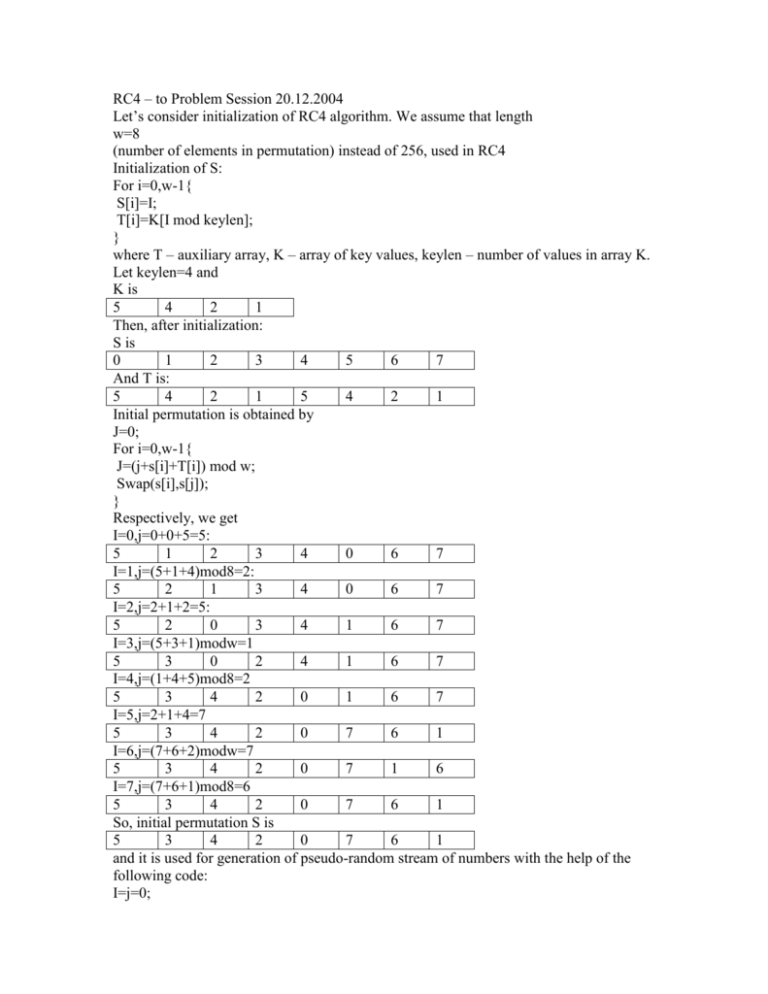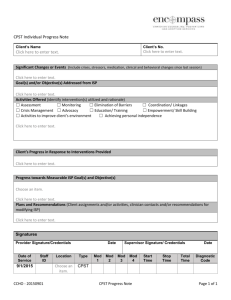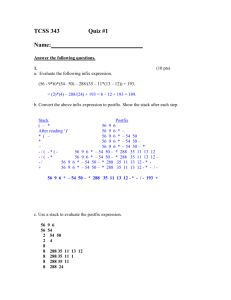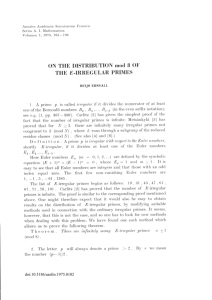Problem session 20.12.04 additional materials
advertisement

RC4 – to Problem Session 20.12.2004
Let’s consider initialization of RC4 algorithm. We assume that length
w=8
(number of elements in permutation) instead of 256, used in RC4
Initialization of S:
For i=0,w-1{
S[i]=I;
T[i]=K[I mod keylen];
}
where T – auxiliary array, K – array of key values, keylen – number of values in array K.
Let keylen=4 and
K is
5
4
2
1
Then, after initialization:
S is
0
1
2
3
4
5
6
7
And T is:
5
4
2
1
5
4
2
1
Initial permutation is obtained by
J=0;
For i=0,w-1{
J=(j+s[i]+T[i]) mod w;
Swap(s[i],s[j]);
}
Respectively, we get
I=0,j=0+0+5=5:
5
1
2
3
4
0
6
7
I=1,j=(5+1+4)mod8=2:
5
2
1
3
4
0
6
7
I=2,j=2+1+2=5:
5
2
0
3
4
1
6
7
I=3,j=(5+3+1)modw=1
5
3
0
2
4
1
6
7
I=4,j=(1+4+5)mod8=2
5
3
4
2
0
1
6
7
I=5,j=2+1+4=7
5
3
4
2
0
7
6
1
I=6,j=(7+6+2)modw=7
5
3
4
2
0
7
1
6
I=7,j=(7+6+1)mod8=6
5
3
4
2
0
7
6
1
So, initial permutation S is
5
3
4
2
0
7
6
1
and it is used for generation of pseudo-random stream of numbers with the help of the
following code:
I=j=0;
While(true){
I=(i+1) mod w;
J=(j+s[i]) mod w;
Swap(s[i],s[j]);
Index=(s[i]+s[j]) mod w; //place of element to be output
Output=s[index]; //value of output element
}
where Output denotes next value in the generated stream.











